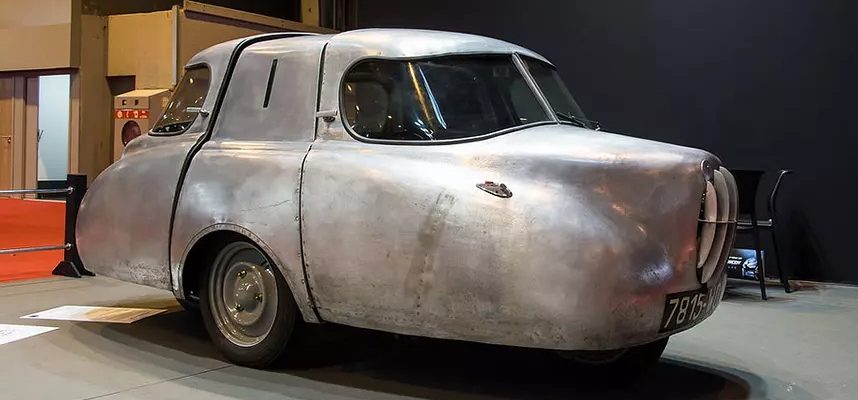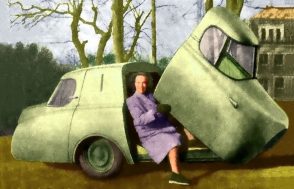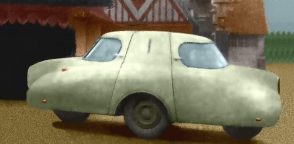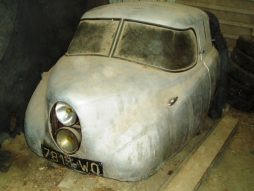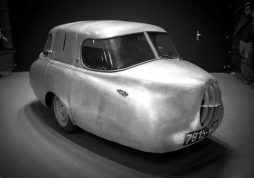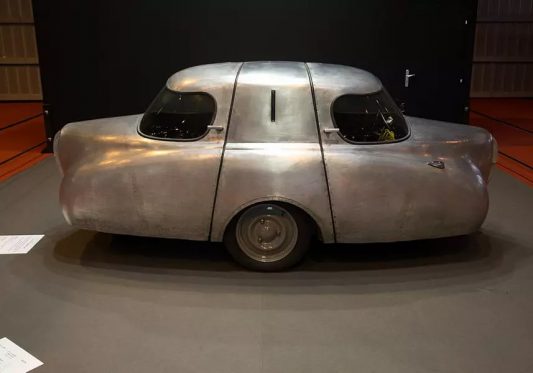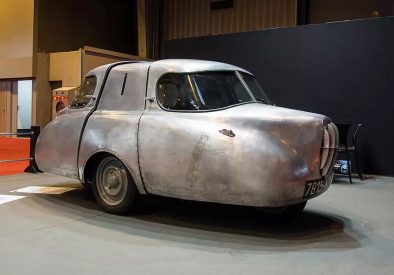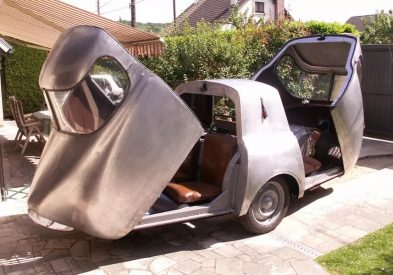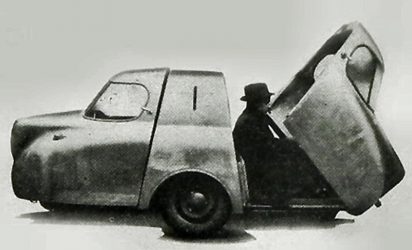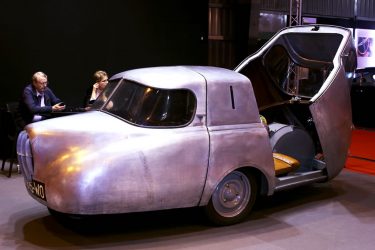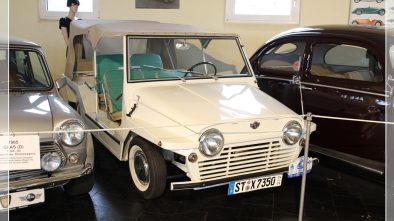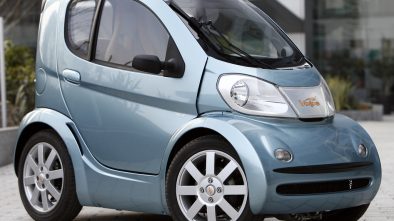Alamagny Rhomboid
In 1947, the French engineer, Marcel Alamagny (engineer for Renault and Gordini), presented a curious prototype of a microcar with capacity for 4 passengers. The Alamagny prototype, also known as Alamagny/Lozenge was a small, four-wheeled car, inspired by the “car of the future”, projected in 1934 by Gabriel Voisin. Development had begun in 1946 and the construction was carried out by the Bureau d’Etudes des Prototypes of Saint Cloud, near Paris.
Alamagny designed a symmetrical and visually identical model, both on the front and on the back. The vehicle had 4 wheels, two of which shared an axle located in the center of the vehicle, which was powered by a small, 569cc, 4-cylinder, water-cooled engine from a Simca 5, mounted transversely.
At each end of the vehicle there was a single wheel that marked the direction, allowing the vehicle a turning radius of only 4.25 meters. The driver and the passenger sat with their backs to the engine, and the other two passengers also, but looking out the rear window and in the opposite direction. Despite the appearance of the car, the gearbox was conventionally configured so that driving was always carried out from the same position, at one end of the car. The vehicle was 3,420 mm long and 1,600 mm wide, weighed 450 kg, and had a top speed of 85 km/h (53 mph).
The Alamagny prototype got up to 3 patents and was exhibited in various places in France in 1947 and 1948. In 1948, it was presented at the Paris Salon and also at the SIA (Society of Automobile Engineers), but its development did not continue, being finally preserved by Amedee Gordini.
